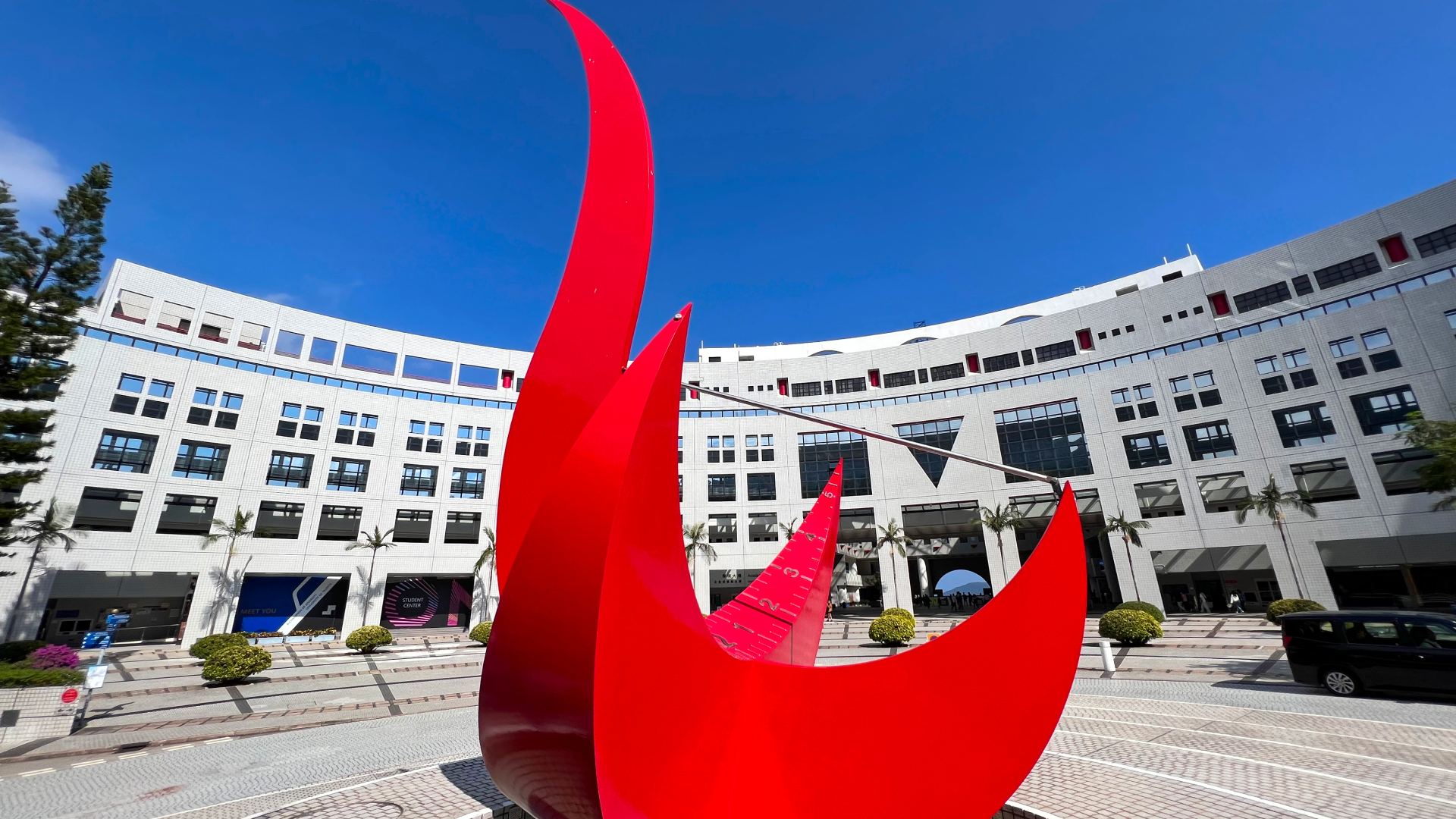News & Stories
2016
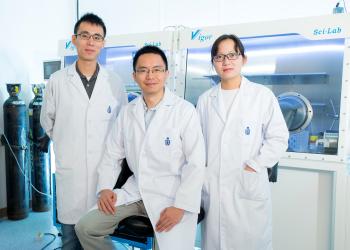
News
HKUST Finds a New Material System that Opens a New Era for Organic Solar Cells
Researchers at The Hong Kong University of Science and Technology (HKUST) have discovered a novel material system that would revolutionize the future development of Organic Solar Cells (OSCs). OSCs based on this new material system have demonstrated ultrafast and efficient charge separation despite a nearly zero charge separation driving force, meaning that the more environmentally-friendly OSCs may be able to perform as good as inorganic solar cells in the future.
The breakthrough, discovered by a research team led by Prof Henry He Yan from the Department of Chemistry, was published in Nature Energy in June.
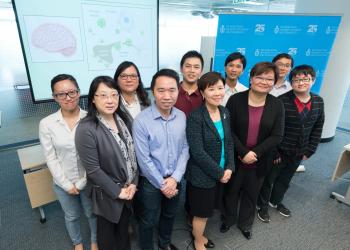
News
Breakthrough Discoveries at HKUST Offer New Hope for Treatment of Alzheimer's Disease
A research team led by scientists from the Hong Kong University of Science and Technology (HKUST) has discovered that a protein found in the human body could be potentially developed as an effective treatment for Alzheimer’s disease (AD).
The team, led by Prof Nancy Ip, Dean of Science, Director of the State Key Laboratory of Molecular Neuroscience and The Morningside Professor of Life Science at HKUST, in collaboration with Prof Eddy Liew from the University of Glasgow and Prof Baorong Zhang from Zhejiang University, has found that the protein interleukin-33 (IL-33) ameliorates cognitive decline and Alzheimer's disease-like pathology. The groundbreaking study was conducted at HKUST and the results have just been published in the prestigious scientific journal, Proceedings of the National Academy of Sciences USA (PNAS).

News
HKUST Scientists Discover New Measures to Facilitate Neural Repair
Damage to axons in the central nervous system (CNS) typically results in permanent functional deficits. If injured neurons can regenerate sufficient number of axons, the CNS may recover and overcome such functional deficits. A research team led by Prof Kai Liu, Assistant Professor from the Division of Life Science at the Hong Kong University of Science and Technology (HKUST), has recently discovered a novel strategy to promote axonal regeneration of injured neurons, which could inspire new directions for CNS repair research, including spinal cord injuries. The findings were published in the journal Proceedings of the National Academy of Science on 16 February 2016.

News
Breakthrough Discoveries in Ising Superconductivity
Theoretical physicists from the Department of Physics at the Hong Kong University of Science and Technology (HKUST) gave an explanation to the phenomenon of superconductivity surviving under strong magnetic field, offering a theoretical answer to an unsolved experimental observation by a group of scientists in the Netherlands.
The collective findings were published on November 12, 2015 in Science.
[DOI:10.1126/science.aab2277].(http://m.sciencemag.org/content/early/2015/11/11/science.aab2277.abstract)
Superconductivity is a quantum phenomenon in which electrons form pairs and flow with zero resistance. However, strong enough magnetic field can break electron pairs and destroy superconductivity. When researchers from the Netherlands informed Prof Vic Law’s team that superconductivity in thin films of MoS2 could withstand an applied magnetic field as strong as 37 Tesla, Prof Law and his student Noah Yuan came up with an explanation.
2015
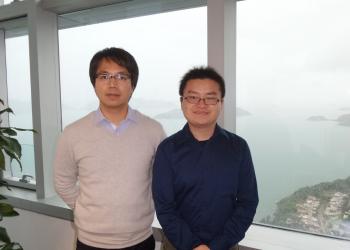
News
HKUST Theoretical Physicists Solve the Puzzle of Ising Superconductivity
A research team led by Prof Vic Kam Tuen Law, Assistant Professor of the Department of Physics at the Hong Kong University of Science and Technology (HKUST), gave an explanation to the complex phenomenon of superconductivity that survives under strong magnetic field, offering a theoretical answer to an unsolved experimental observation by a group of scientists in the Netherlands. The collective findings were published in Science on 12 November 2015.
Superconductivity is a quantum phenomenon in which electrons form pairs and flow with zero resistance. However, strong enough magnetic field can break electron pairs and destroy superconductivity. When informed by researchers from the Netherlands that superconductivity in thin films of MoS2 could withstand an applied magnetic field as strong as 37 Tesla, Prof Law and his student Mr Noah Yuan came up with an explanation and solved the puzzle.
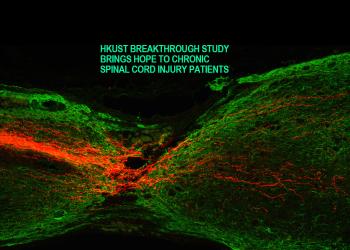
News
HKUST Breakthrough Study Brings Hope to Chronic Spinal Cord Injury Patients
HKUST researchers recently found a way to stimulate the growth of axons, which may mark a new beginning on chronic spinal cord injury (SCI) treatments.
SCI is a formidable hurdle that prevents a large number of injured axons from crossing the lesion, particularly the corticospinal tract (CST). Patients inflicted with SCI often suffer a loss of mobility, paralysis, and interferes with activities of daily life dramatically.
Led by Professor Kai Liu, Assistant Professor from Department of Life Sciences at HKUST, the HKUST research team initiated PTEN deletion on mice after pyramidotomy. Similar treatment procedures were carried out 4 months and 12 months after severe spinal cord injuries.
The team recorded a regenerative response of CST axons in all three samples – showing that PTEN deletion stimulates CST sprouting and regeneration, even though the injury was sustained a long time ago.
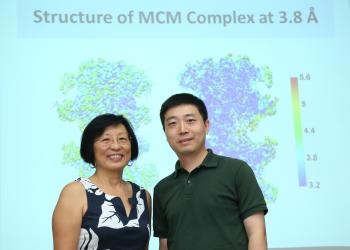
News
HKUST-Tsinghua University Scientists Solve the Structure of the MCM2-7 Complex that Destabilizes Duplex DNA for Unwinding
A team of scientists from the Division of Life Science and HKUST Jockey Club Institute for Advanced Study at the Hong Kong University of Science & Technology, and School of Life Sciences at Tsinghua University are the first to solve the near atomic structure of the MCM2-7 Complex, which plays a key role in destabilizing and unwinding duplex DNA during DNA replication.
The work is published in an article in the journal Nature on July 29, 2015 (http://dx.doi.org/10.1038/nature14685) and highlighted in a commentary in News and Views in the same issue (http://www.nature.com/nature).
2014
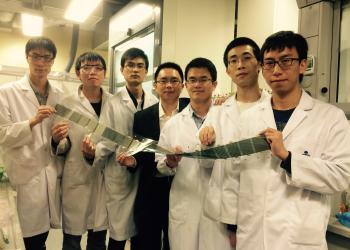
News
HKUST develops materials for record efficiency polymer solar cells
A research team at the Hong Kong University of Science and Technology (HKUST) has developed a family of polymer and fullerene materials that enabled multiple cases of high-efficiency polymer solar cells. The team, led by Prof He Yan of the Department of Chemistry, discovered a material design motif that led to three new polymers and over ten high-performance material combinations yielding solar cell efficiencies of up to 10.8%, a new record for single-junction polymer solar cells.

